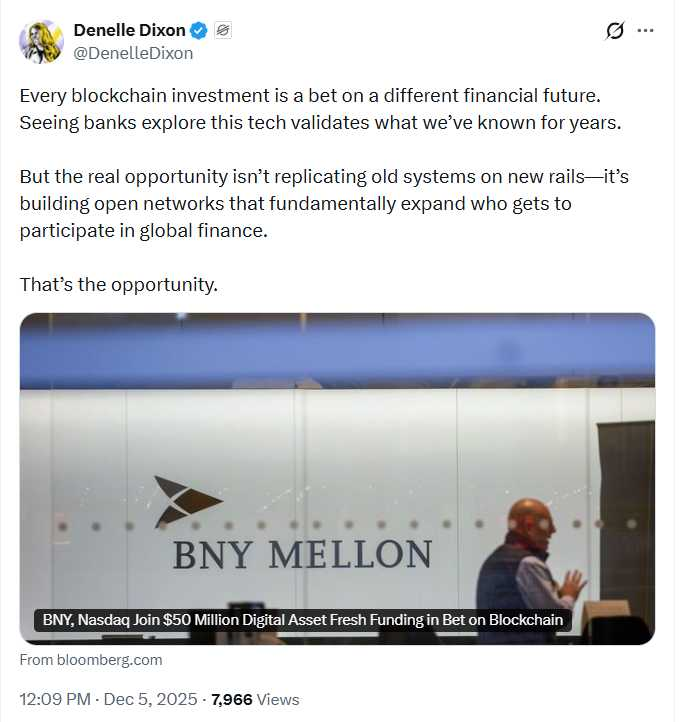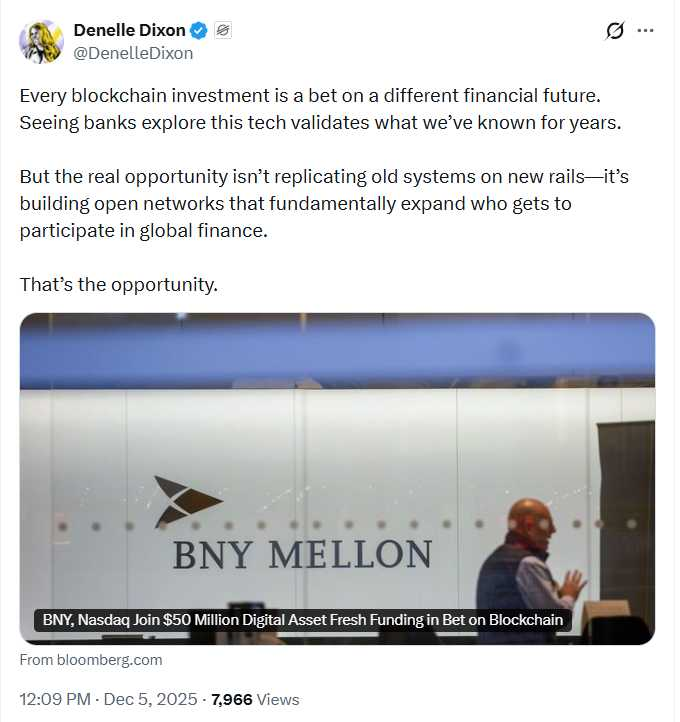As bytes replace dollars, euros, and renminbi, some changes will be welcome; others may not
Money has transformed human society, enabling commerce and trade even between widely dispersed geographic locations. It allows the transfer of wealth and resources across space and over time. But for much of human history, it has also been the object of rapacity and depredation.
Money is now on the cusp of a transformation that could reshape banking, finance, and even the structure of society. Most notably, the era of physical currency, or cash, is drawing to an end, even in low- and middle-income countries; the age of digital currencies has begun. A new round of competition between official and private currencies is also looming in both the domestic and international arenas. The proliferation of digital technologies that is powering this transformation could foster useful innovations and broaden access to basic financial services. But there is a risk that the technologies could intensify the concentration of economic power and allow big corporations and governments to intrude even more into our financial and private lives.
Traditional financial institutions, especially commercial banks, face challenges to their business models as new technologies give rise to online banks that can reach more customers and to web-based platforms, such as Prosper, capable of directly connecting savers and borrowers. These new institutions and platforms are intensifying competition, promoting innovation, and reducing costs. Savers are gaining access to a broader array of saving, credit, and insurance products, while small-scale entrepreneurs are able to secure financing from sources other than banks, which tend to have stringent loan-underwriting and collateral requirements. Domestic and international payments are becoming cheaper and quicker, benefiting consumers and businesses.
Stability concerns
The emergence of cryptocurrencies such as Bitcoin initially seemed likely to revolutionize payments. Cryptocurrencies do not rely on central bank money or trusted intermediaries such as commercial banks and credit card companies to conduct transactions, which cuts out the inefficiencies and added costs of these intermediaries. However, their volatile prices, and constraints to transaction volumes and processing times, have rendered cryptocurrencies ineffective as mediums of exchange. New forms of cryptocurrencies called stablecoins, most of which ironically get their stable value by being backed by stores of central bank money and government securities, have gained more traction as means of payment. The blockchain technology underpinning them is catalyzing far-reaching changes to money and finance that will affect households, corporations, investors, central banks, and governments in profound ways. This technology, by allowing secure ownership of purely digital objects, is even fostering the rise of new digital assets, such as non-fungible tokens.
At the same time, central banks are concerned about the implications for both financial and economic stability if decentralized payment systems (offshoots of Bitcoin) or private stablecoins were to displace both cash and traditional payment systems managed by regulated financial institutions. A payment infrastructure that is entirely in the hands of the private sector might be efficient and cheap, but some parts of it could freeze up in the event of a loss of confidence during a period of financial turmoil. Without a functioning payment system, a modern economy would grind to a halt.
In response to such concerns, central banks are contemplating issuing digital forms of central bank money for retail payments—central bank digital currencies (CBDCs). The motives range from broadening financial inclusion (giving even those without a bank account easy access to a free digital payment system) to increasing the efficiency and stability of payment systems by creating a public payment option as a backstop (the role now played by cash).
A CBDC has other potential benefits. It would hinder illegal activities such as drug deals, money laundering, and terrorism financing that rely on anonymous cash transactions. It would bring more economic activity out of the shadows and into the formal economy, making it harder to evade taxes. Small businesses would benefit from lower transaction costs and avoid the hassles and risks of handling cash.
Risk of runs
But a CBDC also has disadvantages. For one, it poses risks to the banking system. Commercial banks are crucial to creating and distributing credit that keeps economies functioning smoothly. What if households moved their money out of regular bank accounts into central bank digital wallets, perceiving them as safer even if they pay no interest? If commercial banks were starved of deposits, a central bank could find itself in the undesirable position of having to take over the allocation of credit, deciding which sectors and firms deserve loans. In addition, a central bank retail payment system could even squelch private sector innovation aimed at making digital payments cheaper and quicker.
Of equal concern is the potential loss of privacy. Even with protections in place to ensure confidentiality, any central bank would want to keep a verifiable record of transactions to ensure that its digital currency is used only for legitimate purposes. A CBDC thus poses the risk of eventually destroying any vestige of anonymity and privacy in commercial transactions. A carefully designed CBDC, taking advantage of fast-developing technical innovations, can mitigate many of these risks. Still, for all its benefits, the prospect of eventually displacing cash with a CBDC ought not to be taken lightly.
The new technologies could make it harder for a central bank to carry out its key functions—namely, to keep unemployment and inflation low by manipulating interest rates. When a central bank such as the Federal Reserve changes its key interest rate, it affects interest rates on commercial bank deposits and loans in a way that is reasonably well understood. But if the proliferation of digital lending platforms diminishes the role of commercial banks in mediating between savers and borrowers, it’s unclear how or whether this monetary policy transmission mechanism will continue to function.
Currency competition
The basic functions of central-bank-issued money are on the threshold of change. As recently as a century ago, private currencies competed with each other and with government-issued currencies, also known as fiat money. The emergence of central banks decisively shifted the balance in favor of fiat currency, which serves as a unit of account, medium of exchange, and store of value. The advent of various forms of digital currencies, and the technology behind them, has now made it possible to separate these functions of money and has created direct competition for fiat currencies in some dimensions.
Central bank currencies are likely to retain their importance as stores of value and, for countries that issue them in digital form, also as mediums of exchange. Still, privately intermediated payment systems are likely to gain in importance, intensifying competition between various forms of private money and central bank money in their roles as mediums of exchange. If market forces are left to themselves, some issuers of money and providers of payment technologies could become dominant. Some of these changes could affect the very nature of money—how it is created, what forms it takes, and what roles it plays in the economy.
If market forces are left to themselves, some issuers of money and providers of payment technologies could become dominant.
International money flows
Novel forms of money and new channels for moving funds within and between economies will reshape international capital flows, exchange rates, and the structure of the international monetary system. Some of these changes will have big benefits; others will pose new challenges.
International financial transactions will become faster, cheaper, and more transparent. These changes will be a boon for investors seeking to diversify their portfolios, firms looking to raise money in global capital markets, and economic migrants sending money back to their home countries. Faster and cheaper cross-border payments will also boost trade, which will be particularly beneficial for emerging market and developing economies that rely on export revenues for a significant portion of their GDP.
Yet the emergence of new conduits for cross-border flows will facilitate not just international commerce but also illicit financial flows, raising new challenges for regulators and governments. It will also make it harder for governments to control the flows of legitimate investment capital across borders. This poses particular challenges for emerging market economies, which have suffered periodic economic crises as a result of large, sudden outflows of foreign capital. These economies will be even more vulnerable to the monetary policy actions of the world’s major central banks, which can trigger those capital outflows.
Digital central bank money is only as strong and credible as the institution that issues it.
Neither the advent of CBDCs nor the lowering of barriers to international financial flows will alone do much to reorder the international monetary system or the balance of power among major currencies. The cost of direct transactions between pairs of emerging market currencies is falling, reducing the need for “vehicle currencies” such as the dollar and the euro. But the major reserve currencies, especially the dollar, are likely to retain their dominance as stores of value because that dominance rests not just on the issuing country’s economic size and financial market depth but also on a strong institutional foundation that is essential for maintaining investors’ trust. Technology cannot substitute for an independent central bank and the rule of law.
Similarly, CBDCs will not solve underlying weaknesses in central bank credibility or other issues, such as a government’s undisciplined fiscal policies, that affect the value of a national currency. When a government runs large budget deficits, the presumption that the central bank might be directed to create more money to finance those deficits tends to raise inflation and reduce the purchasing power of central bank money, whether physical or digital. In other words, digital central bank money is only as strong and credible as the institution that issues it.
Government’s role
Central banks and governments worldwide face important decisions in coming years about whether to resist new financial technologies, passively accept private-sector-led innovations, or embrace the potential efficiency gains the new technologies offer. The emergence of cryptocurrencies and the prospect of CBDCs raise important questions about the role the government ought to play in financial markets, whether it is impinging on areas that are preferably left to the private sector, and whether it can compensate for market failures, particularly the large number of unbanked and underbanked households in developing economies and even in advanced economies such as the United States.
As the recent cryptocurrency boom and bust have shown, regulation of this sector will be essential to maintain the integrity of payment systems and financial markets, ensure adequate investor protection, and promote financial stability. Still, given the extensive demand for more efficient payment services at the retail, wholesale, and cross-border levels, private-sector-led financial innovations could generate significant benefits for households and corporations. In this respect, the key challenge for central banks and financial regulators lies in balancing financial innovation with the need to mitigate risks to uninformed investors and to overall financial stability.
New financial technologies hold the promise of making it easier even for indigent households to gain access to an array of financial products and services, and of thereby democratizing finance. However, technological innovations in finance, even those that might allow for more efficient financial intermediation, could have double-edged implications for income and wealth inequality.
The benefits of innovations in financial technologies could be captured largely by the wealthy, who could use them to increase financial returns and diversify risks, and existing financial institutions could co-opt these changes for their own benefit. Moreover, because those who are economically marginalized have limited digital access and lack financial literacy, some of the changes could draw them into investment opportunities whose risks they do not fully appreciate or have the ability to tolerate. Thus, the implications for income and wealth inequality—which has risen sharply in many countries and is fomenting political and social tensions—are far from obvious.
Another key change will be greater stratification at both the national and international levels. Smaller economies and those with weak institutions could see their central banks and currencies swept away, concentrating even more economic and financial power in the hands of the large economies. Meanwhile, major corporations such as Amazon and Meta could accrete more power by controlling both commerce and finance.
Even in a world with decentralized finance built around Bitcoin’s innovative blockchain technology (which is likely to be its true legacy), governments have important roles to play in enforcing contractual and property rights, protecting investors, and ensuring financial stability. After all, it appears that cryptocurrencies and innovative financial products, too, work better when they are built on the foundation of trust that comes from government oversight and supervision. Governments have the responsibility to ensure that their laws and actions promote fair competition rather than favoring incumbents and allowing large players to stifle smaller rivals.
Continue Reading: https://www.imf.org/en/Publications/fandd/issues/2022/09/A-new-era-for-money-Prasad





























